
The Former Hirosaki City Library (Nov. 2025)
74. Governing Urban and Regional Transport: Three Types of Evaluation in Comparative Perspective
This article examines the governance and evaluation of urban and regional transport systems in France, Japan, and the United Kingdom and highlights how institutional arrangements and evaluative practices shape transport policy outcomes. France is an example of a statutory model in which metropolitan and regional authorities operate within legally mandated frameworks and formal performance metrics. Japan reflects a consensual, negotiation-based approach that emphasises political legitimacy, community access, and stakeholder, whereas the UK demonstrates contractualised, performance-oriented governance informed by new public management principles. By comparing these cases, this article argues that evaluation should offer constitutive aspects of governance — shaping authority, accountability, and resource allocation — rather than being limited to technical assessments. This article develops a typology of evaluation regimes — statutory, consensual, and contractual — situating these within the broader governance and transport policy literature and exploring their theoretical and practical implications. These findings suggest that effective urban and regional transport governance requires an alignment between institutional authority, evaluation mechanisms, and local sociopolitical contexts. Policymakers are encouraged to adopt context-sensitive approaches that balance efficiency, equity, and legitimacy to sustain local mobility and infrastructure development.

Haneda Airport and Tokyo Gate Bridge (Jul. 2025)
73. Governing by Expertise: Air Traffic Controllers as Professional Administrative Officers
This article examines air traffic controllers as a category of professional administrative officers, synthesising foundational information on their institutional status, recruitment and training systems, personnel management, and international comparisons. Although air traffic controllers in Japan are formally positioned within the national civil service system, the highly specialised, safety-critical, and time-sensitive nature of their work has resulted in a set of exceptional institutional arrangements in compensation, professional development, and organisational design. Reconstructing these features from a public administration perspective, both historical and comparative, this article offers an initial conceptual framework for understanding air traffic controllers as a distinctive form of professional administrative expertise within the Japanese state. This study serves as a preparatory step towards the broader goal of mapping the institutional architecture not only of the air traffic control profession but also of Japan’s specialised administrative occupations. Simultaneously, it identifies important questions for future research. First, considering aviation safety as the overriding policy objective, what organisational and personnel structures are most appropriate for supporting expert ATC practices in air traffic control? Second, how are the institutional arrangements governing recruitment, training, and organisational placement shaped by broader political, bureaucratic, and societal contexts? Third, from the standpoint of public administration scholarship, further empirical investigations into controllers’ career paths, their interactions with adjacent administrative domains, and the institutional dynamics that shape them are needed.

Akabira Coal Mine Heritage (Sep. 2025)
72. Mind the Gap Between Comprehensive Plans and Policy Evaluation
In Japan, comprehensive plans and policy evaluations often remain insufficiently connected. This report examines ways to strengthen their integration by drawing on the French experience with Plans de Déplacements Urbains (PDU). Within the PDU framework, evaluations are legally mandated at the drafting, mid-term, and ex-post stages, supported by institutional mechanisms that maintain continuity across planning cycles. Through stakeholder consultations and the use of diverse, responsive indicators, evaluation functions not merely as a tool for simple accountability but as a mechanism that supports multi-faceted accountability—enhancing transparency, responsiveness, and policy learning. The case of Bordeaux Métropole illustrates how urban transport policy can be closely linked to evaluation, with institutionalized feedback loops connecting policy objectives to operational practices. This approach aligns policy goals with service delivery while fostering continuous improvement through the integration of legal mandates, performance indicators, agreement-based obligations, open data, and citizen participation. By embedding robust evaluation at multiple levels and ensuring that results inform subsequent decisions, this model effectively bridges comprehensive plans and implementation, demonstrating how evaluation can promote accountability, adaptability, and long-term enhancement in urban transport policy.

Old Toi Line Shiokubi Bridge Ruins (Jun. 2025)
71. Balancing Farmers and Consumers: Agricultural Policy at a Crossroads
In Japan, a sharp rise in rice prices—dubbed the “Reiwa Rice Riot” made rice policy a major campaign issue. For decades, acreage-reduction programs helped stabilize rice prices. Heat damage in 2023, reduced planting, and revived demand pushed prices sharply higher. The government now plans to expand production from FY2027. In France, La loi Duplomb of July 2025 eased environmental and safety regulations for farmers, allowing exceptional pesticide use, large water reservoirs, and more intensive livestock farming. Supporters see it as relief from rising costs, while opponents—over two million signatories—warn of environmental rollback. The timing is coincidental but revealing. In both countries, climate stress, global market fluctuations, and concerns over food security have politicized farm policy. Japan continues to prioritize farmer protection, whereas in France critics fear the policy favors deregulation. In both cases, the deeper challenge is the same: how to balance the needs and burdens of those who produce food with the interests of all who consume it. These episodes underscore that agriculture is not merely a market activity but a strategic and public policy domain requiring careful societal choices.
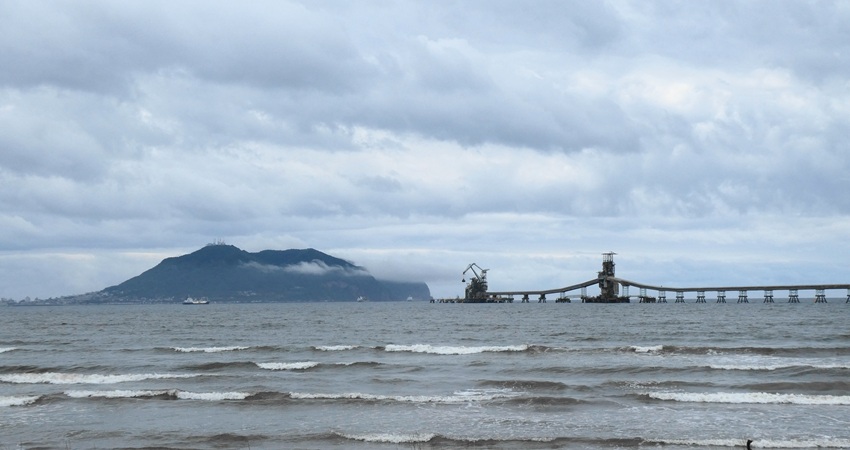
Hakodate Bay (Jun. 2025)
70. Book Review: Wataru Sano et al. (eds.) Developing Policy Professionals (Minerva Shobo, 2025)
This volume explores how to cultivate policy professionals in a complex society, emphasizing not just skills but ethical responsibility and public values. It introduces the idea of a “policy mind,” integrating knowledge, thinking, and ethics, and urges universities to act as bridges between academia and practice. The book examines the evolving role of evidence in policymaking and promotes experiential learning methods like simulations and policy debates. It also addresses the longstanding tension over training responsibilities between universities and government or industry, highlighting the need for universities to maintain their distinctive role in fostering deep, critical understanding rather than merely supplying immediate practical skills. As the reviewer, I warn against defining policy professionals solely by coordination abilities detached from foundational disciplines such as law, politics, and economics. This work serves as both a practical guide and a cautionary reminder, making it an essential resource for educators and reformers engaged in public policy training.

JR Hokkaido Sassho Line (May. 2025)
69. Book Review: Akifumi Shimada, Postmodern Public Administration (Yuhikaku, 2024)
Shimada’s book offers a compelling framework for how public administration should respond to growing complexity and diversity. Drawing on his work since 2003, he critiques idealized democratic models and highlights the practical importance of administrative discretion, moral responsibility, and adaptive implementation. He argues that bureaucratic conflict—often seen as a problem—can serve constructive purposes if managed horizontally. Shimada also critiques centralized coordination mechanisms and instead advocates for flexible legal frameworks and greater empowerment of frontline officials. He explores the paradox of decentralization, where increased local autonomy may paradoxically lead to internal centralization, and calls for grassroots innovation and more inclusive governance. The book culminates in his proposal for “clinical public administration,” which centers on micro-level practices and reflective dialogue among stakeholders. As the reviewer, I commend Shimada’s theoretical ambition and empirical insight, while encouraging a deeper engagement with global governance scholarship, rather than with those elegant in abstraction, already referenced, who remain oddly averse to fruitful dialogue with us, earnest peers. This book stands out as a bold and thoughtful contribution to contemporary administrative theory.
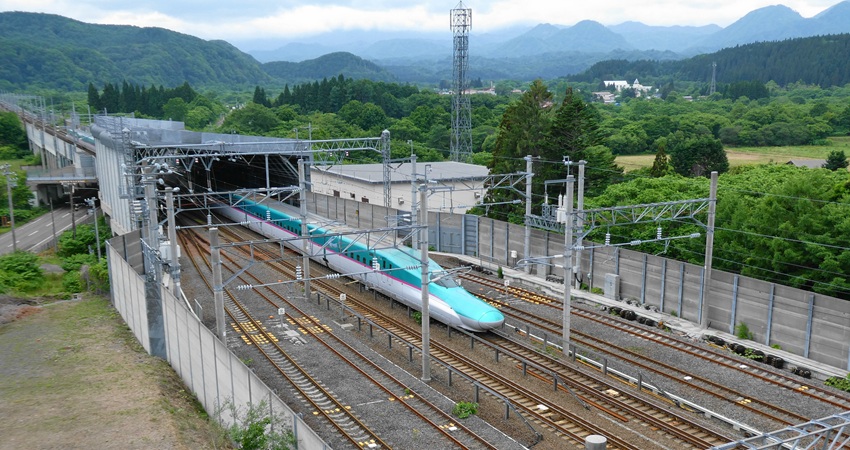
Hokkaido Shinkansen observed from the Roadside Station Shiriuchi (Jun. 2025)
68. Making Agile Governance Work in Bureaucratic Administration
This study explores how the advantages of Agile Governance (AG) could be effectively integrated into the traditional administrative bureaucracy without causing disruption. While the current bureaucratic system is hierarchical and segmented—features that could enhance its rationality—it also presents a number of structural challenges. AG, characterized by its capacity for rapid, flexible policy formulation, implementation, and evaluation in response to changing conditions, offers a promising approach to addressing these shortcomings. By examining domestic and international cases, this research focuses on key factors such as leadership models, public-private collaboration, and inter-branch coordination within the government, including legislative and judicial bodies. The aim is to assess the practical applicability of AG, identify its limitations, and propose concrete strategies for enhancing the flexibility and responsiveness of administrative bureaucracy. Ultimately, the study seeks to offer a new perspective on achieving more effective governance (Grant-in-Aid for Scientific Research(C) project 2025-2029).

Ponte di Rialto in Venice (Apr. 2012)
67. New Frontiers in Policy Evaluation: Responding to Social Change
This lecture examines how policy evaluation can adapt to a rapidly changing society. It begins by revisiting the purposes of evaluation—such as learning and accountability—and highlights current challenges like increasing complexity and the need for more agile approaches. The case of Hokkaido is introduced as an example of regional innovation, showing a shift toward outcome-based evaluation, while facing practical difficulties in implementation. European developments are also discussed, where diverse methods, broader application, and a strong community of evaluators illustrate advanced practices, despite ongoing issues like inclusiveness and political context. Finally, the lecture touches on digital transformation (DX) and its implications for evaluation. While still developing in Japan, DX evaluations must consider not only technology, but also organizational and institutional change. European multi-dimensional approaches offer useful references. The talk concludes by emphasizing the need for timely, adaptive, and practical evaluations that can better support future policymaking (as a common topic for PPSAJ (Public Policy Studies Association of Japan) 2025).

Hatcho Miso Storehouse in Okazaki City (Feb. 2025)
66. From Surplus to Strategy: Rethinking Japan's Rice Security Through Global Food Law
The recently revised Basic Law on Food, Agriculture, and Rural Areas underscores the importance of long-term food supply stability, ensuring affordability and high quality. This study examines the mechanisms and evolution of Japan's ‘rice security’ by analysing policymaking and implementation processes under both normal conditions and emergencies. It focuses on key stakeholders, including ministerial bureaucrats, agricultural policy specialists within the ruling Liberal Democratic Party, and agricultural cooperatives. Since the 1970s, the Japanese government has implemented production adjustments—commonly known as the rice acreage reduction policy—to prevent price declines. At one point, both ruling and opposition parties considered adopting a European-style direct payment system, but concerns over financial burdens led to continued reliance on de facto acreage reductions. Against this backdrop, a surge in rice prices since the summer of 2024 prompted the government, after seemingly careful deliberation, to release stockpiled rice under strict conditions. However, given the increasing complexity of rice production and distribution, the effectiveness of this measure remains uncertain. This study argues that policies aimed at maintaining rice prices—largely shaped by political dynamics—should prioritise expanding surplus rice exports and increasing the use of rice for feed to ensure long-term security. In this context, a strategic global food law approach, such as branding rice as open and closed intellectual property, could play a crucial role in stabilising the market and strengthening Japan's rice security.

Nagasaki Hashima Island, so called Gunkanjima (Mar. 2016)
65. Preface for a Special Feature: Classroom Experiences of HOPS Students
Annals, Public Policy Studies serves as a platform for broadcasting the educational, research, and practical achievements of the Hokkaido University Public Policy School (HOPS). For this edition, as editor-in-chief, I have introduced a special feature highlighting the classroom experiences of HOPS students. While research activities have been the major focus of HOPS, it also emphasises education and the cultivation of skilled professionals by continuously refining its methods to fulfil its social responsibilities. The articles in this issue cover a wide range of topics, including interdisciplinary policy case studies, social security, labour and welfare policies, non-profit organisation management, practical English seminars, and labour law. HOPS provides an irreplaceable learning environment for recent graduates, working professionals, and international students. Its curriculum is enriched by courses taught in English and distinguished part-time instructors from their respective fields. This special feature also reflects the diverse aspects of programs offered by HOPS in public management, international policy, and technological policy. It is a great honour to witness how collaborative relationships between faculty and students enable meaningful and effective educational practices. I extend my heartfelt gratitude to all who contributed and wish the best for the future of HOPS and its students.
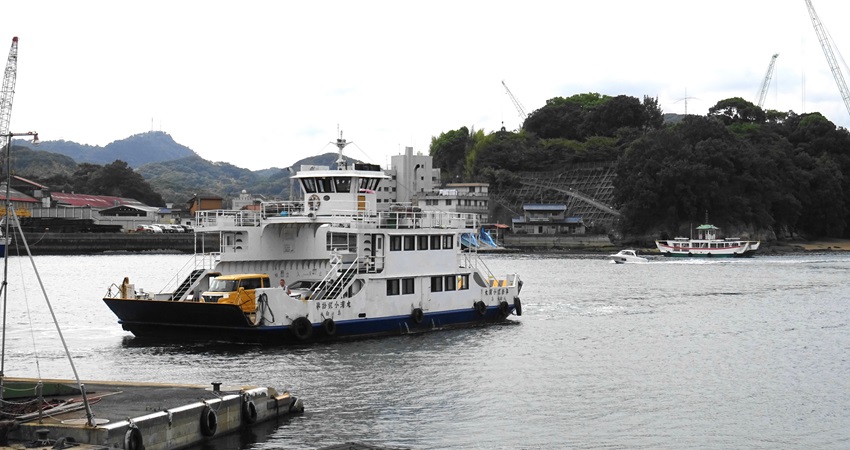
Onomichi Ferry (Sep. 2024)
64. Enhancing Policy Evaluation: Insights from European Accountability and Responsiveness Practices
This study examines the evolution of and challenges facing policy evaluation in Europe, offering insights into improving Japanese practices. The OECD has recognised Europe for its robust implementation of Regulatory Impact Assessments (RIAs) and stakeholder consultations, with policy evaluation serving as a cornerstone of governmental accountability, particularly within the European Commission. Recent updates to the EU’s ‘Better Regulation’ agenda have further rationalised and harmonised these evaluations, transforming them into tools not only for accountability but also for setting new policy agendas, building a knowledge base, facilitating discussions, and gaining foresight from long-term mega-trends. This study also reviews the evaluative functions of the European Parliament, European Court of Justice, and European Court of Auditors. It identifies three key takeaways: (1) policy evaluation has a synergistic potential when multiple EU institutions operate within a checks-and-balances framework; (2) Europe and Japan face shared challenges, such as insufficient data, limited expertise, and politicisation of evaluations; and (3) through using a broad range of methods, from ex-ante impact assessments to ex-post performance audits, European evaluation systems have reached an advanced state. To strengthen Japan’s policy evaluation framework, it is essential to focus on both accountability and responsiveness through a more comprehensive evaluation approach.

Taushubetsu River Bridge: Railway Heritage in Kami-Shihoro (Jun. 2024)
63. Reassessing Central-Local Relations: Insights from Decentralization and National Risk Resilience
Thirty-one years after the Japanese Diet's "Resolution on the Promotion of Decentralization," the amended Local Autonomy Law in 2024, which expands the government's directive powers in response to the COVID-19 pandemic, prompts a reassessment of the central government’s role in protecting lives and property, and its relationship with local governments in terms of risk management. This article reviews the successes and challenges of Japan’s decentralization reforms since the 1990s, evaluates the basis for a recent proposal to expand the government's directive powers, and explores the responses of local governors and practitioners. Considering (1) the current situation of broadly dispersed municipalities in Hokkaido, (2) the vertical intergovernmental relations or division of labor observed in France, and (3) existing literature on the causal relations between true decentralization and national risk resilience, it argues that for the government to build resilience against compound risks, central-local government relationships and local governance should be designed and operated with a sense of coherence (favoring trans-municipal functionalism over inner-municipal territorialism), uniformity (as desired by local governors and practitioners post-COVID-19), and subsidiarity (a European principle that enables the EU government to work while respecting local autonomy).

Just before landing at Haneda Airport (May. 2024)
62. Deciphering the Dynamics: Science Council of Japan and CSTI Working 'in Tandem' ?
The Science Council of Japan (SCJ), the Japanese national academy, has traditionally emphasized its role in providing scientific advice and proposals since its establishment in the postwar period. However, its influence has waned due to the emergence of other scientific advisory bodies and the growing prominence of governmental leadership through the Council on Science, Technology, and Innovation (CSTI) within the Cabinet Office. A CSTI report in 2003 recommended that SCJ and CSTI work "in tandem," with SCJ collecting scientific opinions in a bottom-up manner to make neutral recommendations, while CSTI, supported by Cabinet members, formulates STI policy decisions. Despite this, since the ministry reorganization in 2001, STI governmental departments have encroached upon academic departments in terms of organization and personnel. The concept of "tandem" can be problematic if interpreted to mean that the two entities are connected by fixed axles or that they function as "brains and horsepower" to promote STI policy, as this conflicts with the SCJ's expected independence as a national academy. As highlighted in a 2015 expert meeting report, this paper argues that SCJ should focus more on analyzing government policies from a scientific perspective and providing more timely, useful, and publicly beneficial views based on scientific evidence, thereby enhancing its significance.

City tram in Matsuyama (Oct. 2023)
61. Qui supporte le fardeau des transports en commun dans une société en déclin ?
Le retour imminent du "train Botchan" pour des visites touristiques à Matsuyama sert-il de rappel poignant de son importance en tant qu'icône touristique de la région ? Sur fond de déclin démographique et de pénurie de conducteurs, de nombreuses municipalités luttent avec la nécessité de recalibrer leurs réseaux de transports en commun. En contraste frappant avec ces ajustements, Montpellier Agglomération, nichée dans le sud de la France avec une population de 500 000 habitants, a audacieusement adopté un changement de paradigme en rendant tous les transports en commun gratuits pour les résidents à partir de décembre 2023, conformément à une promesse du président du Parti socialiste. Montpellier se positionne comme la plus grande ville parmi les 45 municipalités qui ont défendu la gratuité des transports en commun depuis les années 1970. Le pilier de la pérennité financière de cette initiative réside dans le mécanisme du "Versement Mobilité". Au-delà de l'atténuation des préoccupations environnementales et de transport, cet effort souligne également son impact positif sur les fronts économiques et sociaux. Les approches divergentes observées à Matsuyama et à Montpellier invitent à la réflexion, notamment dans des régions comme Hokkaïdo, où persistent les craintes quant à la viabilité soutenue des modèles de transport en commun régional exploités par des entreprises privées en pleine contraction démographique.

The old bullet train in the countryside of Japan (Oct. 2023)
60. Novelty of Agile Governance in Contemporary Government Discourse
This study explores the novelty of Agile Governance (AG) and its practical and theoretical background, which has received increasing attention. AG highlights the challenges in bureaucratic administration and policy processes while incorporating elements like ‘agile’ responsiveness, particularly notable in technological innovation and experiences during the COVID-19 pandemic. The AG aims to address the need to improve the rigid and time-consuming aspects of current administrative systems and policies, thereby influencing recent public administrative reforms in Japan. Three case studies provided additional insights into AG. The effectiveness of co-regulation between government and private entities in formulating and implementing regulations ensures that regulations match technological innovation, underscoring the significance of governmental ‘meta-regulation’. Rather than solely assessing the effectiveness of policies and administrative operations based on predetermined benchmarks in local comprehensive plans, it is more effective to utilise specific indices as monitoring tools, thereby facilitating the reassessment of policy goals and tools. Enhancing AG involves positioning it within the relationship between legislative and judicial bodies, serving as a counterbalance. Future considerations include integrating AG strengths into broader bureaucratic organisations, optimising strategic relationships between the public and private sectors, and prioritising values within the AG while ensuring stakeholder satisfaction. Interdisciplinary perspectives are crucial to elucidate and implement AG for improved governance.

Kazusa Murakami Station on the Kominato Railway
59. 'Agile Governance' and Monitoring & Evaluation in Public Administration
The identified shortcomings of the Japanese policy process in the recent government report on 'Agile Governance' (AG) — responsive and flexible policymaking and implementation that can address complex and difficult social issues promptly and appropriately — are not necessarily novel. The software-design-inspired AG is being systematically theorised in academia. Mergel et al. (2020) assert that AG assumes situations that are fluid and change over time, privileges adaptive structures over hierarchies and silos, emphasises responsible individual discretion over bureaucratic procedures, and underscores continuous self-reflective learning processes. It increases knowledge about processes, procedures, and requirements for new processes and services. However, AG cannot be easily adopted because it is antithetical to many typical bureaucratic line organisations. It requires a new form of leadership (for example, 'meta-governance,' as discussed in my 2013 publication) and new forms of contracting and procurement. I emphasise the importance of policy evaluation to ensure accountability ex-post and as a monitoring tool for policy responsiveness. There is a need for constant review of policy goals and the measures to attain them, along with restructuring public-private relationships to leverage respective expertise, as demonstrated by past cases in Japan.
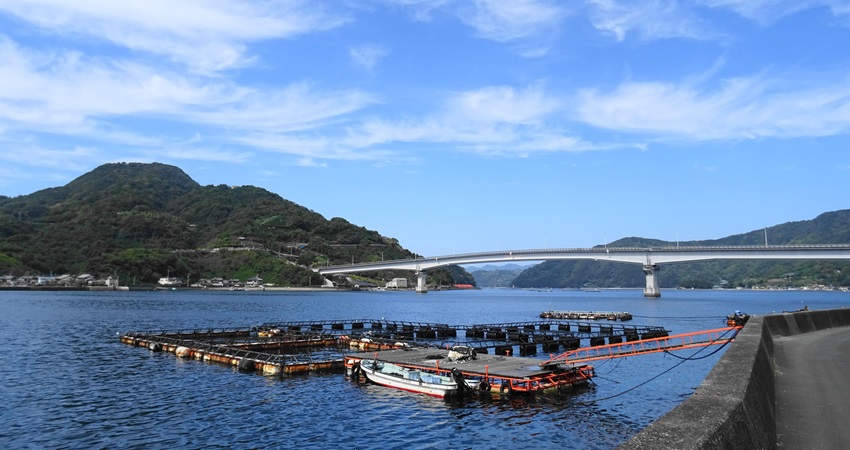
Uwajima Kushima Ohashi Bridge (Oct. 2023)
58. The CITES Implementation Mechanism From the Recent Multi-Level Governance Perspective
CITES aims at species survival by regulating international wildlife trade for species protection and conservation. Especially since the mid-1990s, the main focus of the treaty has shifted from a total ban on trade to controlling the wildlife trade on a scientific basis for ‘sustainable use’. The international negotiation process for selecting which wildlife trade to regulate or exempt is an interesting topic of study, but the emphasis of recent research has been on governance or mechanisms that ensure that the parties’ agreements are surely implemented and enforced. This paper reviews the CITES treaty implementation mechanism with reference to the latest literature, aiming to share it with researchers and practitioners in the field of environment. It then discusses the importance of horizontal and vertical multi-level governance: (1) specialised administrative and judicial bodies for regulation, police, and customs, (2) effective coordination and cooperation among the related agencies, backed by member states’ national legislation, and (3) policy integration with public-health and food-hygiene measures through the so-called One-Health approach currently under discussion.

Otaru Port (Sep. 2023)
57. Port Authorities as a Key Factor in Port Governance Research
A port authority (PA) represents either a public or private entity endowed with the authority to oversee the administration, development, management, and, occasionally, the operation of port facilities and infrastructure, in addition to the coordination and supervision of port operations related activities (Notteboom, T., Pallis, A., & Rodrigue, J.-P. (2022). Port Economics, Management and Policy. New York: Routledge. pp. 301-302.). The prevailing global trend revolves around the establishment of domestic and intercontinental PA networks and their collaborative efforts. These developments have been facilitated by top-down or bottom-up governmental guidance, aimed at preventing resource wastage resulting from over-competition among ports and promoting new logistic chains. In Japan, more than 90% of all the ports are managed in a decentralized and democratic manner by prefectures and municipalities. This approach led to fragmentation within the broader, nationwide port strategy. Indeed, the current system reflects the historical context of pre-and post-war Japan and respects the principle of democratic control over own territories. Still, I contend that the adoption of a networked PA as a corporate entity, functioning in accordance with stakeholder consensus, can ease over-fragmentation of ports and the resulting inefficiencies witnessed in Japan.

ANA Aircraft Maintenance Facilities (Feb. 2023)
56. French 'Administrative Tradition' and Innovation: Peters’ Framework and My Experience
Brainard Guy Peters proposes a new framework of ‘administrative tradition', a historically based set of values, structures, and relationships with other institutions, that define the nature of appropriate public administration within society. Among the significant Anglo-Saxon, Napoleonic, Germanic, and Scandinavian models, France has an 'administrative tradition' of the state as a solid and autonomous organism, uniformity through préfet and cumul des mandats, politicization of bureaucracy and bureaucratization of politics, codified legalism, managerialism, grands corps and pantouflage, an autonomous state in relation to society, and emphasis on inspection and personal fault in bureaucracy. In addition to the introduction of performance measure evaluation in the administration, this study offers recent cases of local agreements on regional railway operations, decentralization with the creation of métropoles and the parallel delay in municipality mergers, a nationwide demonstration against fuel tax hikes, pension reforms, and the neoliberal reforms of universities, the political decision to abolish the École nationale d'administration, a symbol of French elitism, and the political shift toward a greater emphasis on the environment after the local elections in 2020. We should continue to watch whether they end up just being temporary, or an innovation that endures.

ES CON Field Hokkaido in Kita-Hiroshima (Apr. 2023)
55. Public Administration and Law during the COVID-19 Pandemic
This paper compares initial countermeasures against COVID-19 taken by the French and Japanese governments, showing that both nations went through normal administration, emergency administration, and emergency-law stages, although at different speeds. This paper argues three points: First, a scientific advisory system in crisis should be duly established to enable government to make policy based on a range of alternatives offered by scientist-advisors, while making it clear that the government ultimately bears the risk, responsibility, and accountability for the measures taken. Second, the relationship between politicians and bureaucrats (medical and infection technocrats) and the administrative and judicial branches, or between the core executives and the ministries of government, whether in peacetime or in crisis, should be reconsidered and formulated as such. The French president, for example, proposed financial support measures to overcome the adverse effects of stove-piped departments. Excessive political initiative, however, can cause the bureaucracy to atrophy. Moreover, these inner-governmental multi-level risk communications should be open and transparent. Third, the proper and timely transition from normal administration to the emergency-law stages is critical in governmental crisis management. Emergency administration enables quick response but is vulnerable from a lack of sufficient legal backing. In this respect, the French Conseil d’état’s emergency doctrine since the World War I period is a good reference because it requires urgent countermeasures to be legitimised immediately by parliamentary law.

Koga Kubo Park (Mar. 2023)
54. Public High School Restructuring under Rapid Population Decline
In Ehime Prefecture, a drastic restructuring of local public high schools has become an issue. In July last year, the Prefectural Board of Education announced a plan to merge or reorganise 26 high schools out of the total 48 by 2027. Although this is the most drastic reform in 60 years, the final decision was not given sufficient time, and attached residents and graduates launched some campaigns to have the plan reconsidered. As a result, in March of this year, it was decided to postpone some mergers or reorganisations. Enthusiastic campaigns in conjunction with actions by the town mayor and local businesses were somewhat successful (Some ambitious high schools in Hokkaido are reported to be working together to make themselves more attractive). An unprecedented approach to education was proposed, considering local needs and recent trends, such as establishing a game-creation course in the conventional design branch. Additionally, some reorganisations were postponed to secure local education, verify the impact of the restructuring, and innovate teaching and learning methods. Particularly in rural areas, public high schools are important in terms of local vitality, and students who have limited alternatives owing to their economic situation must be considered. However, no one disagrees that we should take some measures against unpopular high schools with a view to the future. Prefectural and central governments should respond to local enthusiasm and ingenuity while considering sustainability.

Bansui-so Palace in Matsuyama, Japan (Dec. 2022)
53. Trans-Disciplinary Public Policy Studies Aimed at Achieving Sustainable Development Goals
This paper first introduces a humanities–science fusion initiative (i.e., lectures on Science, Technology, and Innovation policy, and a case study course on public policies made up of various kinds of expertise) in which I have been engaged at the Hokkaido University Public Policy School. Subsequently, the STI governance structure, the risk assessment/management, and the communication connecting science and politics are discussed to illustrate the significance of trans-disciplinary respectful cooperation. Moreover, I assess the prospects of public policy (studies) in the post-COVID-19 period, after reviewing the history of international development since the United Nations Development Decade in the 1960s, which consequently led to SDGs (Sustainable Development Goals), as well as the trans-disciplinary trials and errors needed to achieve them. When policy resources are not very abundant, the importance of political decisions (i.e., proper prioritization) and specialized planning (i.e., efficient and effective implementation) involving various stakeholders cannot be stressed enough, and there is a need for global and trans-disciplinary knowledge stocking and sharing to achieve SDGs. Ambitious SDGs that set and share common major aims will hopefully lead to collaboration, which will in turn give rise to the creation of multi-level partnerships. Universities can contribute to such collaboration through their diligent and steady education and research.

Ginkgo-Tree Tunnel at Hokudai (Nov. 2022)
52. Independence, or Autonomy, and Transparency in Ensuring Trustworthy Regulations
Trustworthy regulatory agencies must be independent and transparent concerning politics or the elected administration, other competing promotive ministries, and regulated parties. It is more relevant to nuclear regulation, with references to the International Atomic Energy Agency guidelines and lessons learned from the catastrophic Fukushima disaster. This paper proposes a new framework for assessing a nuclear regulatory body's autonomy and transparency. It works to avoid ‘regulatory capture’ while also ensuring regulatory accountability and responsibility by maintaining a certain ‘distance’ from other institutions, on the one hand, and making balanced decisions, paying attention to non-homogeneity and non-controlling relations between well-specialized members in the open collegiate body, on the other hand. Continued and appropriate regulatory implementation, enabled by such autonomy and transparency, will result in a good reputation and thus public trust. The framework is used to examine nuclear regulations in East Asia and in France and conclude that the composition of their agencies varies depending on the type of autonomy (e.g. political, organisational, or technological) that each country seeks.

The New Air Force One of Japan (Sep. 2022)
51. A Perspective on the Regional Governmental System in Future Japan
Based on the results of my studies in France and Japan, I suggest the following three proposals. First, a three-layered government system implementing a regional government between the central government and prefectures can be more efficient than the current two-layered government in certain policy areas, particularly in an emergency, when it yields scale merit. The immediate measures adopted by the Tohoku Regional Development Bureau in the East Japan Great Earthquake in 2011 signify that trans-prefectural public administration can function when it is authorized by both top-down supervision and bottom-up democracy. Second, wider-area governance, or inter-communal cooperation requires governmental support with well-calculated incentives of devolution and finance. As each commune is more populated in Japan (73,475 habitants per commune on average), inter-communal cooperation is assumed to be more difficult to achieve than in France (1,832 habitants per commune). Third, it is the central government that should deal with the cost-burden conflict between urban and rural areas with a somewhat public-interest reasoned persuasion (e.g. environment protection, regional development) because the conflict makes vertical and horizontal inter-governmental cooperation particularly difficult according to French cases of local railway management by the regional government, urban transportation management by métropoles, and difficulties in the inter-communal cooperation or merge.
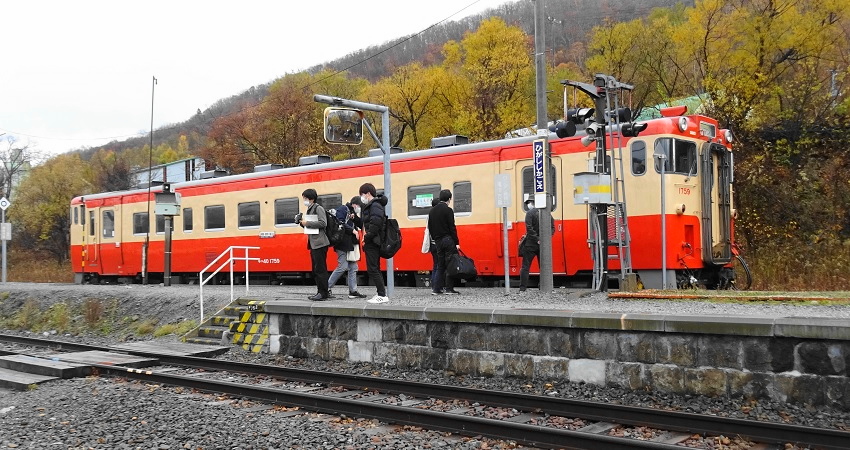
Higashi Shikagoe Station (Oct. 2022)
50. Can Regulations Keep Up With Innovation? Trans-Disciplinary Approach for Sustainability
Government regulations have often hindered technological innovation because the governments do not have enough resources to anticipate and prepare for unpredictable innovations, and the rulemaking and amendment procedures are onerous, rigid, and time-consuming. However, it is also true that innovation does not happen on its own if there is no government support. The advent of computers, an advanced technology at the time, led to an inter-ministerial dispute in Japan amid the electromagnetic interference regulation in the 1970s and 1980s. As a result, some type of public-private “collaborative” regulation has been established. The division of labor between governmental lawmaking of overall regulatory objectives and private self-regulation of technical specifications is compatible with innovation, and should be applied to other newly-emerging technologies such as AI and robots. Regulatory experiments such as the regulatory sandbox and special zone system are also implemented to reconcile the logics of innovation and regulation and co-create a safe and secure society; however, they still need to be improved in terms of their technique and process management.

Mount Yotei viewed from N230 (Jun. 2022)
49. Institutionalizing Systematic Evaluation to Ensure “Better Regulation”: Focusing on ROBs
To prevent “regulatory capture,” this article discusses a systematic evaluation to ensure “better regulation” and a way to institutionalize it, focusing on (1) the Regulatory Oversight Body (ROB), its dilemma of political accountability and expertise, its comparison with the US, EU, and Japan, and (2) regulatory experiment evaluations. ROB should be placed above and out of the related policy community to ensure meaningful oversight and objective evaluation, and to eventually prevent the regulation from being captured by partial interests. Then, (3) a desirable regulatory evaluation system is envisioned, according to a review of the Special Zone System of Japan. The “stimulus-response” modeled regulatory evaluation can be properly conducted in well-organized regulatory experiments. The main points consist in overcoming the difficulties in causal inference and selection bias, rendering implementation and evaluation activities more objective, and reducing the final decision maker’s discretion after obtaining the evaluation result.

The Tulip Park in Kami-Yubetsu (May. 2022)
48. “Transport Tax” for the Purpose of Managing and Maintaining Regional Public Transportation
French cities use “Versement Mobilité” (VM), or mobility payments, to fund urban public transportation. VM commenced in the 1970s in Paris, and it has spread to 12 métropoles. Local employers with more than 11 employees are obliged to pay from 0.55% to 2%, according to the métropole's decision, of the employee's total salary. The métropole also decides the usage of the fund; the public transportation network in Bordeaux Métropole (BM), for example, is financially supported by private companies (27%, including VM), the central government (17%), other taxes (12%), passengers (7%), and member communes (7%) (BM, “Compte Administratif 2020”). Although a “transport tax” to support regional public transportation would be a reliable fund (as it is worth 11% of the BM budget), it should be noted that VM works because beneficiaries and payors of the public transportation are situated in the same urban area and they often overlap and because a return of money to payors, like the discounted “Pass Salarié” of BM, is visible and easy to do. When designing a “transport tax” in general, the gap between beneficiaries and payors can provoke a consensus problem because it is nothing but a “financial transfer” from the city to the periphery, where regional public transportation is in crisis.

Blaye, la région Nouvelle-Aquitaine (Aug. 2020)
47. Public Administration for the STI Policy: Democratization and Rationalization
Although the Science, Technology, and Innovation (STI) policy in Japan largely relies on the private sector, the central and regional governments have some discretion on comprehensive STI strategy planning, grants distribution for research and development (R&D) infrastructures, and other forms of technical support for non-governmental actors. Hence, public administration for the STI policy should be placed under democratic control. The central government is controlled by the STI policy democratically mandated basic planning and strategy, budget coordination involving the Ministry of Finance and the Diet, and systematic policy assessment and evaluation. This study discusses how to democratize and rationalize the STI policy by conducting a case study on Dosoken, the Hokkaido Research Organization (HRO). HRO became independent from the Hokkaido Government in 2010 after the new public management reforms. Consequently, HRO has to be more responsive not only to the advice of the Hokkaido Government and third-party experts, but also to the needs expressed in regular meetings with government officers, local practitioners, and related industries. HRO researchers have to be accountable for their R&D, but are, in fact, autonomous from the organizational management, and therefore, unnecessary contradiction and duplication between R&D evaluations and those on the institutional management are avoided.

The Retiring Series 40 (Mar. 2022)
46. La vulnérabilité d'un « État fort » ? : La crise sanitaire et la politique française
Cette co-article rédigée avec Toru Yoshida décrit pourquoi l'État fort France est devenu vulnérable face à la pandémie de coronavirus. Après la revue des études antérieures sur les aspects organisationnels de l'État fort, nous introduisons le schéma conceptuel de la « confiance » comme une grille de lecture liant l'État fort et ses échecs de gestion de crise. Après la description et l'analyse de la crise sanitaire en France en 2020, notamment sur le rôle du Conseil de défense, du Conseil scientifique et de la Ségur de la santé, nous concluons comme suit ; La majorité de la population n'ayant pas confiance envers les autorités, les réglementations sanitaires imposés par le gouvernement ne sera pas suivit a titre comparatif. Les récessions économiques, comme le taux de chômage plus élevé, le Gilet Jaune et la manifestation contre la réforme des retraites ne sont que des effets révélateur de cette tendance générale. Par conséquence, le gouvernement, avec sa complexité organisationnelle et dans sa confusion informationnelle, n’aurait que le choix de renforcer sa régulation au détriment de l'opinion publique. Ce cercle vicieux a rendu l'État fort plus vulnérable à la crise sanitaire.

David Mach Sculpture "Out of Order" (Dec. 2019)
45. Evaluation Science for More Strategic STI Budget, Planning, and Procurement
Public administration studies conceptualise that in a broad sense, governmental responsibility includes governmental accountability and in a narrow sense, it includes responsibility. The governmental accountability is heteronomous as is ensured by a system of governmental delegation and democratic control. It questions whether the government acts according to its delegations from the Diet and the Cabinet, and whether it spends public funds appropriately and without waste. It is mostly ensured by settlements, finance audits, achievement measurements, and ex-post reporting. The governmental responsibility is autonomous as is entrusted to administrative professionals. It questions whether the government identifies and properly prioritises the social problems to be solved, and whether they are dealt with to attain public interest in their specialty. It is mostly ensured through ex-ante surveys, monitoring, assessments of policy alternatives and procurement, and budget coordination. Although conventional evaluation science has tended to excessively emphasise the former, the latter should be developed in an interdisciplinary manner, especially in science, technology, and innovation (STI) strategy planning. Our next challenge consists in tackling how evaluation science can overarch the aforementioned governmental responsibility.

Washington D.C. (Jan. 2009)
44. The Politics of Global Maritime Environmental Regulation (2/2)
Consequently, the MERs can bypass regulatory capture by vested interests and advantageous industry. In addition, they can offer various regulatory alternative tools that have been experimented with in some regions to be used for future worldwide regulation. It is true that regionally fragmented environmental regulations that directly reflect local interests make the IMO difficult to work efficiently for global regulatory governance. However, the regulated ship-owners require IMO to deal with global issues with its specialty and its wide eyesight to represent various interests of both sides of cost and benefit and to lead them to better comprehensive regulations. IMO’s effort to orchestrate multi-level regulations decreases uncertainty in current MERs. Furthermore, this enables ship-owners or one of the regulatory veto players to be perceived as worth of more cooperation.

Église Saint Martin à Pau (Feb. 2019)
43. The Politics of Global Maritime Environmental Regulation (1/2)
This study examines why maritime environmental regulations (MERs), such as those that limit sulfur oxides and particulate matter emission, are delayed more than those on land and air transports. Moreover, it explores why the International Maritime Organization (IMO), the United Nations specialized agency responsible for regulating shipping, has not functioned adequately. This study concludes that this is because of regulatory cost and benefit (or, more precisely, to whom cost incurs and who gains benefit), which are both dispersed (this, it is difficult to specify who) in the maritime environmental regulatory space. It is an outstanding exception of typical environmental regulation, where the cost is concentrated, whereas the benefit is dispersed, as explained in The Politics of Regulation by J.Q. Wilson.

ATR 42-600 at Sapporo City Airport
42. Reconsidering Regional Railway Management in Hokkaido
The recent events in Hokkaido are reviewed in our co-authored paper with Prof. Takamatsu, Dr. Kobayashi, and Prof. Kishi, and it is concluded that (1) Hokkaido’s rail lines should be divided into three categories, including mainline, wide-area, and intra-municipal transport systems, to clarify which level of government (i.e. central, regional, or municipal) should be in charge of them; (2) the Hokkaido government should take more responsibility in obtaining funds from the central government, forming a strong relationship with JR Hokkaido through financial assistance, and coordinating with stakeholders to form a regional ‘transport network’; and (3) transport modes, including regional railways, should be integrated into a wider network with a comprehensive plan including policy objectives for regional development and environmental protection, which should be primarily established by the Hokkaido government so that passengers can utilise the railways efficiently.

Sapporo in the Olympic Games period
41. Reconsidering Regional Railway Management from a Comparative Perspective
The aim of our co-authored paper with Prof. Jun-ya Takamatsu, Dr. Daisuke Kobayashi, and Prof. Kunihiro Kishi is to expand on our webinar discussion, which took place on 15th July 2021. France has realised the development of a passenger-friendly regional railway service by giving increased discretion to regional authorities. This favourable outcome can also be explained by the organisational reform of quasi-public railway companies and the recent decisions made by the independent regulatory agency in France. The ministerial management of franchised train services and privatised railways after the failure of neoliberal reforms in the United Kingdom, along with changes in regional policies, has resulted in an increase in passengers and an improvement in service. Germany has a balanced system for overseeing its regional railways, as its federal parliament ensures that regional interests are considered thoroughly; consequently, sufficient federal subsidies are devoted to the Bundesland region’s railways, which are subject to a highly effective, competitive bidding process.

Lisbon, Portugal
40. Interdisciplinary approach to consensual global standardization
Global standardization, or unified product specification, is advantageous to product compatibility, interoperability, market expansion, cost reduction, procurement facilitation, and global dissemination of excellent technologies to ensure quality and safety. This presentation shows how consensual global standards should be determined. First, technology is one of the determining parameters of global standards. For example, the standardisation of safe car materials and designs, which protect the car’s occupants in a collision, are determined by technology. However, a robust car is heavier, which may lead to deteriorating fuel consumption and ultimately cause the destruction of the natural environment. Second, global political happenings should be considered. The United States tends to form its own standard and establish it globally, but China is an emerging power in the de jure standardisation process. Furthermore, Europe tries to win the internationally conducted election with the votes of European Union member states to agree with or oppose the standardisation. Third, cultural elements such as every country’s individual perspectives and methods, matter in formalising standards. Moreover, the risk perception factor, which affects standards, depends on the frequency of product use and its circumstances. Finally, from the free trade perspective, discrimination against the import of certain goods, based solely on whether the goods meet consensual global standards, is undesirable. It is necessary to consider the legal and ethical values; a global standard should not be considered as legitimate unless it is created in due process and incorporates the opinions of minorities.

Nakajima Park, Sapporo
39. Multi-level Regulatory Governance, Public Interest, and the Causal Relationship between the Two
The purpose of this project was to identify the causal relationship between multi-level governance (MLG) and the resultant ‘public interest’ and to draw a ‘favourable’ regulatory space model. The cases studied were (1) science, technology, and innovation policy with vertical and horizontal organisations in government, (2) local revitalisation policies in which intergovernmental relations have been tested, and (3) the policy decision and implementation coordination mechanism in the Convention on International Trade in Endangered Species of Wild Fauna and Flora (CITES) and other regimes. The research newly clarified that (1) the MLG framework enables us to view international treaty implementation as a dynamic policy coordination process in time and space, (2) intergovernmental division of labour can lead to ‘good governance’ in a liberal democracy, and (3) a technically and politically legitimate multi-layered regulatory space can be effective in realising some ‘public interest’ as a whole.

Stade Matmut Atlantique, Nouveau Stade de Bordeaux
38. Monitoring and Advice for STI Policy: Lessons from France for Better Policy Evaluation
This paper aimed to examine how to achieve better policy evaluation regarding science, technology, and innovation (STI) considering the case of France. The paper consists of three parts, as presented below: (1) President Charles de Gaulle firstly set up an advisory body in his administration to monitor the STI policy and advise decision-makers. The policy evaluation system was established in the 1980s under a new left party government. (2) There were some trials and errors until the 1990s to make policy evaluations more robust and credible by using bottom-up, redundant, and proactive monitoring, and considering the interaction between the evaluation and the resource management of researchers and research units. (3) With a need for a national STI policy strategy development, what followed was the establishment of an integrated evaluation body (Le Haut Conseil de l'évaluation de la recherche et de l'enseignement supérieur) and a supervising body (Le Conseil stratégique de la recherche). In conclusion, policy evaluation can be improved through an integrated discussion on the aim, processes, and institutional placement of monitoring and advice.
37. Institutional Reconciliation and Collaboration among International Treaty Regimes
This paper describes and analyses interactions between CITES (Convention on International Trade in Endangered Species of Wild Fauna and Flora) and other related treaty regimes in the multi-level governance framework. It further examines (1) how free-trade and environment values are coordinated between CITES and the World Trade Organization in relation to Sustainable Development Goals; (2) how and why CITES and FAO (United Nations Food and Agriculture Organization) set Memorandum of Understanding as an agenda, and what was left behind; and (3) how international regimes such as Office International des Epizooties, FAO, and CITES could act against the coronavirus disease pandemic in the name of the One-Health Approach. It asserts that it is meaningful to see their operations, or their transition management, as reconciliation and collaboration between international and domestic levels, or between policy life stages of rulemaking and enforcement. This paper thus clarifies that CITES is relatively effective in its consensus-building and enforcement mechanism, providing (1) abundant experience of discussion for sharing the concept of sustainability, (2) robust collaborative infrastructures for its enforcement, and (3) stronger trust in its regulatory and managerial tools to attain its mission. However, CITES must often remain passive against other treaty regimes’ approaches for collaboration, largely because of its modest authority delegated from the member states.
36. Réexamen de la gouvernance multi-niveaux en tant que concept et stratégie
La « gouvernance multi-niveaux » (GMN) est définie comme des mécanismes de réconciliation qui conduisent à la résolution de divers conflits politiques verticaux et horizontaux entre les organisations internationales, les gouvernements supra/subnationaux et les acteurs privés. La GMN dans mon cadre désigne les relations et les mécanismes de réconciliation entre (1) les organisations et les traités internationaux ; (2) des agences de régulation indépendantes ou des organismes de surveillance réglementaire ; et (3) les agences de réglementation et de mise en œuvre des politiques. Mon résultat peut être trié en 3 thèmes ; (1) la décentralisation et la « liaison » institutionnelle ; (2) une analyse de la mise en œuvre des traités internationaux ; et (3) démocratie, délégation et GMN. Ce projet réexamine la GMN pour trouver les conditions dans lesquelles la GMN, en tant que stratégie, contribue à « l’intérêt public » ou à une meilleure réglementation/politique, en s’appuyant sur les perspectives comparatives des études sur l’administration publique et le gouvernement/la gouvernance entre l’UE, la France et le Japon (qui sera publié en tant qu'un cahier du Centre Émile Durkheim).

Bordeaux Tram B
35. Evaluation of Municipality Mergers as Policy Tool: Based on the LRP Survey Results
This paper analyses survey results on the Local Revitalisation Policy (LRP) enacted in Japan in 2014, by focusing on differences in answers provided by the merger and non-merger municipalities of the governmental campaign that took place around 2000 (Heisei-no-Dai-Gappei). To evaluate municipality mergers as a policy tool, a case study on Japan was taken into consideration and compared with (non-)merger cases in France, aiming to construct the general theory of its conditions and effects. It was found that ‘non-mergers’ were not strongly influenced by LRP and did not feel obliged to cooperate with neighbours as the LRP desired. On the other hand, they were likely to cooperate with industries, according to their actual and potential partnerships. It cannot be determined whether ‘mergers’ have developed their own competencies as was desired, although they seem to have decreased the extent of democratic participation because their decision-making takes place inside their office. However, they can take relatively more aggressive actions towards other local and central governments without onerous coordination with neighbours.

Patinoire de Mériadeck
34. Le Conseil constitutionnel: institution judiciaire, démocratique et donc indépendante
La loi française sur l'urgence sanitaire a été adoptée par le Parlement le 9 mai 2020, puis le président et les membres de la gauche l'ont déposée devant le Conseil constitutionnel pour examen. Cet examen s'est prolongé de façon inattendue jusqu'à l'après-midi du 11 mai, la promulgation de la loi a été retardée. Ceci a conduit à ce qu'une mesure interdisant de parcourir plus de 100 km n'a pas été sanctionnée pendant des heures. Je comprends que ce décalage notable était très significatif pour la protection des droits de l’homme car il implique l’indépendance du Conseil par rapport au gouvernement. En fait, le Conseil a indiqué à ce moment-là que le gouvernement devrait impliquer le pouvoir judiciaire dans l'adoption de réglementations sanitaires plus strictes. Les institutions indépendantes françaises sont composées de membres des groupes politiques différents, qui discutent après la décision du gouvernement. Le Conseil plutôt digne et sage, contrairement au Japon qui tente d'éliminer la partisanerie du forum et de neutraliser autant que possible les membres, semble justifier et légitimer la reprise des discussions et leurs conseils. Bien qu'il existe un risque de politisation du débat, et de contrôle excessif par le système démocratique qui inclut des anciens responsables poltiques, une décision raisonnable peut être prise par le Président, les Parlements et le Conseil constitutionnel en conséquence. On peut appeler cela « la démocratie à multi-niveaux » à mon avis.

Festival International du Film Indépendant de Bordeaux (Oct. 2019)
33. Democratic Control and Governmental Delegation: Reality and Prospects in STI Policy
Based on case analyses, this paper first points out why the Japanese government's share of research and development (R&D) expenditures is lower than those of France, Britain, and the US: (1) its science and technology (sci-tech) system was once dismantled (just after World War II), and its legacy remains there, (2) private companies have been allowed to work on R&D relatively autonomously from the government, and (3) political and administrative leadership has been absent in sci-tech decision-making. Second, this paper clarifies why Japan's R&D investment targets have not been achieved since the second version of the Sci-Tech Basic Plan in 2001: (1) uncertainty unique to sci-tech policy, (2) continuous intervention from the Ministry of Finance in the overall budget coordination, and (3) the recent transition from a politician-centred process, which once strongly promoted sci-tech policy, to a cabinet-centred process. Third, after a comparison with innovation policy and its implementation in the European Union and Sweden, which have similar ambitions as Japan but different policy systems, this paper concludes that (1) ex-ante budgetary control on sci-tech and innovation policy should be curbed and should delegate more responsibility to the department in charge and to ex-post impact (or output, at least) assessment, (2) budgetary coordination and implementation processes should be separated to avoid excessive democratic control on the latter, and (3) top-down sci-tech policy and bottom-up innovation policy should be recognized as distinct because their recommended policy tools and favourable ways of control differ.

Musée Aeroscopia à Blagnac (Jul. 2019)
32. Railway Management by Regional Governments: The French Neo-liberal ‘Liaison’
The French regional train, Train Éxpress Régionale (TER), in Nouvelle Aquitaine, has regained the 10,000 daily passengers lost over the past 5 years. In contrast, privatised local railways, divided into six regions from the Japan National Rail in 1987, have been facing financial difficulties because of a decline in the number of passengers, increased maintenance costs, and low interest rates, which also affected the government funding (i.e. subsidies) negatively. Local railways both in France and Japan have been greatly influenced by recent neo-liberal theories, such as privatisation, delegation, and marketisation, but with different outcomes, which can be explained by the French way of dealing with reforms. Thus, (1) TER was made independent from the central government in 2002, which enabled each regional government and the operator Société Nationale des Chemins de Fer to work together on feasible management strategies. (2) Regional governments bear 70% of all costs linked to their TER; however, one-third of costs is borne by the central government. (3) The European Union advocates vertical separation in order to liberalise the rail service; however, the French independent regulatory agency Autorité de régulation des activités ferroviaires et routières arbitrates so as to mitigate drastic changes in local railways, contrary to other modes of transportation (e.g. inter-city buses). The French ’liaison’ appears to have strengthened the regional governments’ bargaining power against operators to be responsible for the passengers. In contrast, neo-liberal reforms of Japanese local railways are over-fragmented, missing such a liaison.

Hôtel de Ville de Poitiers (Aug. 2019)
31. An Analysis of International Treaty Implementation Involving CITES
This paper analyses international treaty implementation in cases involving CITES. After reviewing CITES implementation, various problems in Japan, France, and the European Union (EU), and their proposals at the CoP, an analysis using static and dynamic frameworks reveals that CITES implementation should be re-evaluated to determine (1) under what conditions — such as the institutional and normative power of the international organization, or the country’s domestic circumstances in terms of their politics and interests — are international treaties not implemented as agreed upon, and (2) how the implementation system can be assessed if it is described as a continuous process of ‘coordination’ between conflicting rules and values in a global multilevel regulatory governance space. According to the analysis, CITES itself seems to have a relatively effective institution-and-implementation mechanism, but there are various political, administrative, and cultural factors in each country that restrict its enforcement. Even EU members, with their ambitious action plans and multilevel divisions of labour, recognize that enforcement should be improved to be far more effective than it is. A multilevel governance framework, working as both concept and strategy, explains why a treaty implementation system established through continuous and multilateral coordination in a global regulatory space has become more complicated. International treaty implementation needs to have an interdisciplinary approach to make the most of their respective strengths.

Parlement européen Bâtiment Louise-Weiss à Strasbourg (Oct. 2019)
30. La tendance théorique récente de la gouvernance à multi-niveaux
La gouvernance à multi-niveaux (GMN) est définie comme les mécanismes de coordination menant à la résolution de divers conflits politiques verticaux et horizontaux entre organisations internationales, gouvernements supra/infra-nationaux et les acteurs privés. Bien que la GMN ne soit pas nouvelle parce qu'elle est issue de la conception de l’union européenne des années 1980, ses programmes de recherche sont récents et décrits ci-après. Premièrement, la GMN, dont les recherches sont classées dans les relations intergouvernementales et public-privées, devrait accorder une plus grande attention aux acteurs politiques/administratifs émergents, tels que les gouvernements infranationaux et les autorités de régulation indépendantes. Deuxièmement, la récente GMN s'est concentrée sur son importance normative. Il est jugé plus souhaitable pour notre pratique démocratique que le gouvernement, qui est beaucoup plus proche des citoyens, soit correctement placé dans la structure de la GMN plutôt que la prise de décision soit monopolisée par un gouvernement central. Troisièmement, la GMN classique n'a pas réussi à mettre en place une méthodologie appropriée pour s'analyser. Les cadres existants ne sont pas toujours utiles pour expliquer les institutions actuelles telles que l'autorité de régulation transport européen. La GMN est une ancienne, mais aussi une nouvelle façon d'appréhender la réalité administrative publique, avec de nombreuses implications pour l'avenir.

TER à la région Nouvelle-Aquitaine
29. Mon train, ma Région: Pourquoi le service du TER devient-il mieux en Nouvelle-Aquitaine?
Le train régional, ou Transport Express Régional (TER), en Nouvelle-Aquitaine, aurait obtenu un taux de ponctualité de 94%, et un taux de satisfaction des passagers de 93%. Il a retrouvé, dans ces trois dernières années, les dix mille voyageurs quotidiens qu’il avait perdus au cours des cinq dernières années. Ces bons résultats du TER français peuvent s'expliquer par trois raisons. Premièrement, le service ferroviaire régional en France a été rendu indépendant grâce à une allocation budgétaire versée à chaque région par le gouvernement central en 2002. Les régions supervisent la densité et la vitesse des trains sur la base d'un accord mutuel avec l'opérateur. Deuxièmement, le taux d'occupation des TER sièges n'est généralement pas supérieur à 25%. Cela signifie que les régions doivent supporter 70% de tous les coûts liés à leur TER; cependant, le tiers des coûts est assumé par le du gouvernement central. Ceci permet aux régions de négocier collectivement avec l'opérateur. Troisièmement, l'Union européenne (UE) prône la séparation verticale afin de libéraliser le service ferroviaire. Un appel d'offres concurrentiel est lancé pour les trains régionaux en 2023. Même s'il n'est pas certain qu'il y ait d'autres sociétés que la Société Nationale des Chemins de Fer (SNCF), la libéralisation de l'UE semble avoir renforcé le pouvoir de négociation des régions à certains égards. La SNCF doit désormais prendre en compte les besoins distincts de chaque région. Ainsi, chaque région est non seulement le payeur, mais également le décideur pour l'achat.

Le 14 juillet à Bordeaux Quinconces (Jul. 2019)
28. A Lesson from Marseille: Decentralisation and Local Democratic Practices
A building in Marseille, the second largest city in France, collapsed on the morning of 5 November and buried 8 residents. Quaint French cityscapes often fascinate us, but building deterioration does not wait for the implementation or development of policy. The French Government has been decentralised and has delegated its authority, notably to the métropoles, since the 1980s through the 1990s and 2000s. As a result, urban policies such as those that protect against building deterioration have come to vary among cities depending on their political situation and policy competencies. The Marseille city office, which is led by a right-wing mayor, has been planning a municipal project to renovate old buildings in the city centre since 2001. However, less than half of all buildings in Marseille are ineligible for the programme because of ruined materials such as stone and timber. One of the responsible officers resigned after criticisms that the programme excluded several districts from the governmental mission, which seems to have led to the collapse of the building. There is an argument that authority should not be delegated to local governments unless their good governance is ensured. However, the Marseille case reveals that such democratic practices, and consequently good governance, may be gradually achieved in each local government only when government officials and residents understand the purview of their given authority, actual role, and governmental responsibilities. In such cases, we do not have to be afraid of governmental decentralisation and delegation. A discussion is also offered by my colleague at Sciences Po Bordeaux, Professor Gilles Pinson, 'Immeubles effondrés à Marseille: Laisser pourrir le quartier Noailles procède d'une stratégie politique' in Le Monde.

Sciences Po Bordeaux (Apr. 2019)
27. Multi-Level Regulatory Governance as a CITES Implementation Strategy
CITES, led partly by the EU, refers to and re-interprets existing global regulations and international treaties, in a sort of multi-level regulatory governance system, to protect or preserve endangered species, coordinate vested interests, and economize regulatory resources. The EU establishes its position and its action plans to assert and promote the idea of “global public interest” by counting the votes of its member states in related global forums. This strategy appears to be supported by its historical experience of multi-level governance with past and present member parties, where high authority concentrates on basic political decisions, and middle or low organizations work on technical standard setting and partnerships with public and private competent actors for implementation. While the EU can avoid being accused of insufficient enforcement, as this is the member parties' responsibilities, it can try to force it the member states as a supranational organization. In this “multi-level” framework, it is useful to divide horizontal decision-making organizations and vertical implementation agencies which are often connected directly to their producer interest groups, and to separate enforcement and scientific authorities for their appropriate division of labor. This helps in making innovative rules without excessive concern on their feasibilities and for gaining trust or regulatory normative power.

Aquarium La Rochelle: La mer n'est pas une poubelle. (Apr. 2019)
26. CITES Implementation as Multi-Level Regulatory Governance of the Ivory Trade
This project investigates and compares the regulatory implementation of the Convention on International Trade in Endangered Species of Wild Fauna and Flora (CITES) in Japan, France, and the European Union (EU). It is reported that the ivory market in Japan is not fully under government control because of the country’s conventional ivory use, low traceability provoked by e-commerce trades and liberal regulatory exemptions, and the organizational problems caused by silo management and enforcement authorities who restrict free flow of information. Some EU member states including France have been successful in destroying ivory stockpiles by making certifications stricter, improving the regulatory enforcement competence in relation to other regulatory frameworks, and practically combating illegal e-commerce trade with industry and citizens. The EU sets stricter common rules and directives than the CITES for its member states and delegates authorities to them as well as the local agencies.

Sarlat la Canéda (Mar. 2019)
25. A Sustainable Local Governance Model for a Demographic Dynamism and Structure
This study focuses mainly on Hokkaido, an advanced region in dealing with the demographic dynamism and structural problem. The study analyzes various case studies of collaborative initiatives among local governments and other stakeholders with respect to policy measures, such as infrastructure curtailment. It re-examines existing theories on local administration and public finance from new perspectives, such as territorial management and integration of social and scientific technology. It also constructs a strong, sustainable local-governance and public-finance model to address population problems, make proposals for society, and call for their implementation. The study reveals measures that may improve the effectiveness of various collaborative initiatives to support local governance. This project is jointly pursued with my colleagues, Professor Atsushi Miyawaki and Professor Mikine Yamazaki, who also engage in public administration studies at Hokkaido University School of Law. We will continue to pursue this project in the future.

Université de Bordeaux RU1 (Nov. 2018)
24. Improving the current Local Revitalisation Policy: Promoting a recently co-authored publication
This paper reviews responses to the co-authored book Improving the current administration’s Local Revitalisation Policy (ISBN: 9784000238953) from researchers and practitioners in and out of Hokkaido University Public Policy School (HOPS), as well as discussions that took place at symposia at Hokkaido University, Kushiro Public University of Economics and Fukuoka University following publication. The main points are: (1) a ‘division of labour’ between the central and local governments in terms of regional policy, as well as balancing local autonomy and government leadership; (2) a sustainable method for regional revitalisation under the current policy decision-making system; and (3) reconciling the incompatible functional and territorial principles, as well as a way to promote voluntary inter-municipal co-operation.

JR Hokkaido Hanasaki Line (Jun. 2017)
23. The Significance of the STA's Evolution to a ‘Control Tower’ of Innovation Policy
As part of the ministerial reshuffle in 2001, the former Science and Technology Agency (STA) was succeeded partly by the Ministry of Education, Culture, Science, and Technology (MEXT) and partly by the newly built Cabinet Office (or the Council of Science, Technology & Innovation Policy, or CSTI in short). Our survey of the executive officers of MEXT during 2016 and 2017 demonstrates that some staff who were originally appointed to the former STA recognised that recently their agency’s policy had been prioritised by the government, while others felt the opposite. Their agency’s policy has been deprioritised as the former STA, which was established as a powerful nuclear agency, gradually lost its authority and presence because of its repeated accidents and malfunctions. Since 2001, the former STA, which had been a bureaucratic ‘comprehensive coordinator’ in the post-war period, has been upgraded to become a ‘control tower’ of science, technology, and innovation policy backed by the Cabinet leadership. Other economic ministries familiar with the administration and backed by industrial pressure groups can intervene in the ‘control tower’, and so it is losing its autonomy as a technical agency. This paper aims to compare the STA as a ‘comprehensive coordinator’ and CSTI as a ‘control tower’, and assess the significance of the Cabinet enhancement and the central ministerial reorganization from almost twenty years ago.

Okinawan House (Mar. 2018)
22. Legal Issues Following Recent Inbound Tourism: A Theoretical and Empirical Survey
According to my survey, approximately 30.5% of all the local governments in Japan have included an inbound tourism policy in their revitalization strategy, although it not as prioritized as the other economic and social policies, based on whether they have tourist attractions or not. For effective implementation, the policy requires inter-governmental cooperation, led by the upper government or prefecture. A town that promotes coexistence with visiting foreigners reports that it increases English speakers in the town by encouraging international exchange of town officers and through language classes. However, the people seem to demand the elimination of ‘friction’ with newcomers. A possible solution to this issue is the effective implementation of a new tax plan; this has been already discussed nationally and in some prefectures. Local governments’ approaches towards inbound tourism can be roughly categorized as follows: (1) economy and industry, (2) health and welfare, and (3) land and infrastructure, resembling ministerial framing. The first approach which targets acquiring ‘foreign currency’ focuses on foreign visitors as labour force. The second approach which discusses the utilization of ‘foreign currency’ for social welfare, preventing leak outs, focuses on foreign visitors as public service recipients. The third approach which expects visitors’ de facto emigration and settlement beyond just a few-days’ tourism weighs city planning suitable for settlement, such as compact cityization and community revitalization. Some local governments are likely to be rather optimistic towards these policy agendas.

A Generational Change (Jun. 2017)
21. Improving the Current Administration’s Local Revitalization Policy (LRP)
This book, edited by Project Professor Koiso, Professor Yamazaki, and by Dr. Murakami, tries to answer a fundamental question: What has the LRP meant to us, people in Hokkaido and Japan in the period from 2014 to the present? In Chapter 2, Dr. Murakami follows with his study on the impacts and meanings of the LRP in Hokkaido and Shikoku. Although he says that local officers find the LRP reflects their local problem of sharp population decline, they conversely feel that the central government is in control despite recent attempts at decentralization. In Chapter 3, Dr. Murakami clarifies the similarities and continuity between Japanese national development policy in the post-war period and the recent LRP. He places both policies in the context of coordination by the Cabinet and the bureaucracy, which has recently been functionally enhanced through administrative reforms. He identifies the meanings and shortcomings of LRP as a result of the political and administrative reforms in the 1990s and gets a view of future policies under the current Cabinet leadership. This book empirically clarifies that the LRP has questioned population imbalance again in Japan, but that it partly contradicts the decentralization, deregulation, and privatization that Japan has promoted for in recent decades. In the final talk (Chapter 6), all three authors review what they asserted in each chapter and assess the future roles of the central and local governments, political leadership, and our local autonomy.

A Close Encounter (Nov. 2017)
20. Strategies for Global Regulations of Maritime Safety and Environmental Protection
In this interdisciplinary study, (1) I, as a social scientist, conduct research on regulatory standard setting and enforcement, which are largely related to maritime science, technology, and innovation; (2) fruits of implementation studies in precedent public administrative science are applied to maritime regulation whose fields span global, national, and local levels; and (3) researchers of international law and maritime science collaborate with practitioners of Nippon Kaiji-Kyokai (NK), Japan Ship Technology Research Association, and Japan Ship-Machinery Quality Control Association. Public and private partnerships for winning international standardization are addressed as part of the Japanese Government’s preparation of the forum, but the result here implies the importance of (1) supporting and placing nationally recognized organizations like NK and international networks like International Association of Classification Societies into maritime multi-level regulatory governance, 2) more stringent and strategic participation in the international standardization process where public and private actors collaborate globally, and 3) trend surveys of foreign port state controls and dealing flexibly with their uncertainty or arbitrary nature. Their conditions of functioning and the effects of the above-mentioned proposals are to be evaluated in my future study.

Snowy Lakes and Mountains in Eastern Hokkaido and a Glory (Dec. 2017)
19. Similarities between the NLP of Post-War Japan and LRP in Light of the Cabinet Enhancement
This paper clarifies the similarities and continuity between Japanese national land policy (NLP) in the post-war period and the Abe III administration’s recent ‘Local Revitalization Policy’ (LRP). The second section provides an overview of the former National Land Agency, including its foundation, history, and activities from 1974 to 2001. Then, I trace the LRP’s decision-making and coordination process after its founding in 2014, along with the LRP’s control-tower function, organization, and the Cabinet Secretariat personnel. The final section explores the relationship between the post-war national land policy and a recent act against population decline by the prime minister and cabinet. I place both policies in the context of ‘coordination’ by bureaucracy, which has recently been functionally enhanced by administrative reforms. This paper demonstrates that the LRP’s problems, which have been highlighted by regional development planners and local government officials, are largely due to administrative reforms such as decentralization, enhancement of the Cabinet, and agency rearrangements in the 1990s.

Imabari Castle (Sep. 2017)
18. Impact of the Recent ‘Local Revitalization Policy’ on Local Governments in Ehime and Kagawa
This paper follows our study on the impacts and meanings of the recent ‘Local Revitalization Policy’ in Shikoku. Although we present complementary evidence based on our survey conducted last year on the Ehime and Kagawa Prefectures of Shikoku that validates the findings of Murakami et al. (2017), we find that Shikoku and Hokkaido both emphasize, in their respective strategies, economic policy (industry revitalization, and job creation), and social policy (child-care support, and immigration and settlement support). However, Shikoku places more emphasis on the latter because of a precedent partnership and ‘division of labour’ with prefectures that have mainly committed to the former. Further, results assert that (1) the ‘national' policy, which targeted sharply shrinking areas, also lead local governments, which had not worked so hard on population decline, to recognize the seriousness of the problem; (2) Shikoku understood this seemingly ‘spectacular’ and ‘flattering’ policy that local governments saw too late rather calmly, because, unlike with Hokkaido, Shikoku did not have big expectations, and therefore, were not too disappointed with the policy; and (3) such a sudden policy implementation left bitter feelings and busy workloads for these years, and, ironically, an expectation for continuing support to deal with inter-governmental competition in a context of economic decline and population shrinkage.

Nasu Shiobara Station (Oct. 2017)
17. An Essay on an Experimentation and Evaluation System for ‘Better’ Regulation
This essay aims at designing and establishing a consistent experimentation and evaluation system for ‘better’ regulation, which should be one of the ambitious agendas of Sustainable Development Goals (SDGs). First, I introduce a proposal for system reform (Greenstone 2009) in four parts: (1) designing an accumulation system for credible evidence on regulatory costs and benefits, like the scientifically based regulation of the FDA; (2) creating a regulatory review board (RRB); (3) writing an automatic sunset and expansion provision; and (4) developing and applying a code of ethics. Subsequently, I assess Japan’s National Strategic Special Zone (NSSZ) legislation in regard to its practice and basic policy, for the purpose of making it a promising tool for ‘experimental regulation’ in Japan. The statute authorizing the NSSZs announces that it is to be applied to regular, quantitative, and concrete evaluation, but it does not pay much attention to the fundamental problems of causal inference and selection bias. The independence of the evaluator and the influence of evaluation on the removal/extension decision for experimental regulation need also to be improved, based on the abovementioned ideas.

Hiroshima Ujina Port (Mar. 2017)
16. Study on Public/Private Collaborative Regulatory System from the Perspective of PA
This project clarifies the structure and transformation of ‘regulatory space’ and its background from the perspective of public administration (PA). Examined cases of safety regulations indicate that standard-setting and enforcement are also amidst a recent wave of ‘governance’, since public and private actors share discretion in fact-finding, mutual reconciliation, and global harmonization. Although it appears that governmental regulatory discretion decreases in this situation, the government views the regulatory process from a seemingly neutral and distant position, and controls the entire regulatory system for ‘public interest’ with various substantial or procedural regulatory schemes. This implies that the government, in a sense, strategically expands their discretion on the ‘regulation of regulation’ or ‘meta-regulation’. This multi-layered regulation can be helpful in avoiding ‘corrosive capture’. The next phase of my comparative study investigates this aspect in detail.

Crawford Park in Mikasa (Feb. 2017)
15. The Role of Local Councillors in the Age of Decentralization: The Case of ‘Abandoned Houses’
This paper considers the expected role of local councillors in the age of decentralization by investigating decentralized policy implementations against ‘abandoned houses’ in Japan, which local governments are given some discretion in deciding how to deal with. This paper reviews what central and local governments have done until today, and sketches a broad picture of the ‘abandoned house’ problem. It sheds light on the policy agendas that were set and the issues discussed in an experimental policy dialog among local councillors, which the author attended. The study asserts the following: (1) the conventional ‘autonomous rule-making’ role of local councillors turns, in part, into an ‘autonomous administration’ role in collaboration with the local government bureaucracy; (2) the councillors can contribute to the reconciliation of administrative sectionalism in policies where a comprehensive approach is needed (‘government control’ role); and (3) their ‘inhabitant representation’ role stands out because such policies require fact-finding in residents’ everyday life, agenda-setting in councils, and its policy problem-structuring.

Roadside Station at Mima, Ehime (Jan. 2017)
14. Impacts of the Recent ‘Local Revitalization Policy’ on Local Governments in Hokkaido
This paper is one of the first and most comprehensive studies to investigate the meaning of the Abe II administration’s ‘Local Revitalization Policy’ and to review local governments’ reactions in Hokkaido. Based on our survey of all the local governments in Hokkaido during October and November 2016, this paper concludes that the policy has provided a chance for farsighted governments, especially for those experiencing a sharp decline in young people, to realise the emerging problems of a shrinking society and to work on a solution. However, the policy has also been so sudden and almost arbitrary that the local governments’ respective conventional systems were forced to work hard applying for unwieldy grants and following the detailed directions given by the central government. The results of our survey imply that the Central and local governments in Japan share discretion. The Central government maintains discretion in deciding nationwide policies and provides administrative guidance to the respective local governments, whether big or small and rich or poor, allowing them to formulate policies suitable to their own requirements. This is done while maintaining the Central government’s overall policy design through the use of informational, budgetary, and regulatory tools.

River Chubetsu in Asahikawa City (Mar. 2016)
13. Functional Enhancement of the Cabinet and Central Ministry Reform in Relation to S&T Policy
This paper first reviews discussions on restructuring the ministry related to science & technology (S&T) policy in Japan in the process of central ministry reform in the 1990s. The reviews reveal that the Cabinet can be an interface of politicians and bureaucrats, or of politics and public policy, whose function aims at being enhanced in the reforms. This paper then analyses current institutional and S&T policy implementation fifteen years after the reform to determine whether original agendas have been resolved and to what extent. The most important issue of the reform concerning S&T policy was whether to build an independent ministry for S&T policy, or to construct an integrated ministry of science, technology, academics, education, and culture, while providing a skewer function to the newly established Cabinet Office to make a macro S&T policy decision. In contrast with the former, which has suffered objections because of retrospective malfunctions of S&T Agency on nuclear policy, or its raison d’être, the latter was accepted with a strong purpose of promoting cooperative S&T policy enrolling industry, government, and academics (especially universities that science and technology encounter). Its enhanced function of comprehensive policy coordination, or of 'control tower' compared to the former S&T Agency, as a consequence, has become somewhat responsive to a need of coordination with other policies and of drawing resources for S&T policy. However, the restructure in form partly contradicts the substantive operation in terms of budget and personnel.

Intercity at Edinburgh Waverley Station (Sep. 2013)
12. Common Topics for Law and Politics in My Public Administration Study
In my presentation at Hokkaido University Law and Politics Workshop on 17 December 2015, I provided three topics as examples: 1) the ‘competition’ between intergovernmental and non-governmental rules or standards of ships in the global regulatory space; 2) the ‘design’ and ‘practice’ of independent regulatory organizations concerning public and private finance, central bank, and nuclear policy; and 3) the ‘ecology’ of bureaucrats equipped with administrative autonomy and the discretion and delegated authority of administrative guidance. In a following session, I responded to participant questions and said that discretion above is so wide that bureaucrats’ ethics or mission should be important to ask them for administrative responsibility. I also said that it is realistic to examine the extent of independence of regulatory organizations in terms of the distance or tense atmosphere created against others in the course of their operation, and that history and practice of court of justice administration can be another common topic. I hope that the workshop led to the possibility of further dialogue in the future between the disciplines of law and politics in public administration.

Hakodate City (Jun. 2015)
11. 'Corrosive Capture' in Theory and Practice: What is Discussed and How to Prevent It
Regulatory capture has recently been defined as 'the result by which regulation, in law or application, is consistently or repeatedly directed away from the public interest and toward the interests of the regulated industry, by the intent and action of the industry itself'. In excellent contrast to conventional capture theory, the concept of 'corrosive capture' argues that deregulation is no longer a panacea for emerging regulatory capture. This paper first reviews theoretical proposals for preventing capture such as by dividing power across multiple regulators, empowering consumers, promising diffuse interests, and conducting executive reviews of regulations based on cost-benefit analysis. Subsequently, the framework is applied to a Japanese case of regulations on drug sales through the Internet. The case study shows that values and sources of independent expertise are quite diverse in Japan, but the Supreme Court is somewhat hesitant, or more passive than expected in theory, to express substantial objections in regulatory affairs. Executive coordination and the Regulatory Reform Council in the Cabinet, chaired by a private entrepreneur, can free captured regulations from vested interests and make them more effective, although the notion of 'public interest' has not been clearly defined in the regulatory space.

Narita Airport (Oct. 2015)
10. Administrative Discretion: Its Autonomy, Control, and Responsibility
There is a two-sided relationship between administrative discretion and control/responsibility; wide discretion for bureaucrats is argued by some to enable them to do their best to complete their missions, while others argue that it gives them ‘free hands’ to behave on their own without any consideration of the public interest. This paper firstly focuses on a substantive and conceptual enhancement of administrative discretion in history, despite some judicial and de-facto restrictions on bureaucrats from its circumstances, and it defines administrative discretion as a combination of administrative (1) ‘autonomy’ and (2) ‘discretion’ (in a narrower sense, under the delegation of the Cabinet and the Parliament). Case studies were performed on (1) the technical standard-setting process of safety regulations, (2) the organizational design of independent regulatory agencies, and (3) the executive planning and budgeting of science and technology policy. The studies show that bureaucrats today manage to maintain or even widen their discretion (as a whole) by means of making the most of their autonomy and through regulation of regulation, or ‘meta-regulation’. Although recent administrative reform strengthened administrative control from the Cabinet and the Parliament as aimed, administrative responsibility was actually fulfilled through various international organizations, private actors, and a kind of market mechanism, as they are also important in satisfying the procedural requirements of preparing scientific evidence when making decisions, and in winning consumers’ selection and ‘competition’ among various regulatory schemes (whether public or private). It is true that the government should pursue transparency to be accountable and be controlled by other institutions as widely discussed in academia, but this paper argues for widening administrative discretion for bureaucrats, on the contrary, with a sense of their mission, responsibility, and public interest in mind and a focus on a sort of bureaucratic ethics in relation to ministers, politicians, and citizens.

Mt. Rishiri Fuji (Sep. 2015)
9. Establishing “Local Autonomy” in Hokkaido’s “Shrinking Society”
The projected 2040 population of reproductive women in Hokkaido is expected to fall to less than the half of what it was in 2010. It is also forecasted that the most populated city, Sapporo City, is likely to attract quite a lot of people from its periphery. In this sense, Hokkaido is the most advanced against upcoming population problems. Hokkaido’s uniqueness is due to its history of state-driven cultivation and development, its own industrial structure that was dependent on coalmines and other natural resources, its tough climate and weather conditions, and its geographic characteristics given that its villages are physically dispersed. Its expensive cost of public administration calls for citizen participation, or public-private partnerships, although in fact they are not carried out effectively and properly among inhabitants according to our survey results. This project aims to rethink the government-citizen, or public-private relations in public policy and administration for the purposes of proposing another model of the “division of labor” between the public sector and the private sector both theoretically and practically. This project proposes a sustainable model of an autonomous society suitable for Hokkaido and, more broadly, for Japan.

Edinburgh Waverley Station (Sep. 2013)
8. Establishment of the Governmental ‘Control Tower’: Science, and Technology Policy in Japan
This paper begins by describing the establishment of the Scientific Technical Administration Committee (STAC) in 1948, the Science and Technology Agency (STA) in 1956, and the Council for Science, Technology, and Innovation (CSTI) in 2014 in Japan. These agencies have something in common in that they were somewhat expected to work as governmental ‘control towers (CTs)’ of Japan’s science, technology, and innovation policy, with political leadership in the contemporary Cabinet. Second, this paper shows some of the agencies’ similarities and differences. Two hypotheses emerge from the discussion above: the ‘CT’ is a product of the Central Government Ministries Reform (2001); it can cause another authoritative dispute between some ‘CTs’ in the Cabinet Office. These two hypotheses will be tested through further research.

Snowy Hokudai Campus (Jan. 2015)
7. Regulation, Governance, and 'Capture'
This paper reviewed recent theoretical trends and new frameworks of regulation (regulatory governance, regulatory capitalism, and a shift from command and control), governance (governance network, meta-governance, and shadow of hierarchy), and capture (definition of public/private interest, corrosive and cultural capture). Then, it presented significant evidence for these processes is found in my previous case studies on Japanese regulations on wooden buildings, automobiles, electrical appliances, ships, and other products. In the Japanese unique (in a sense) system of governance network of public and private actors, or the gyousei-shidou system in the regulatory space, in which a regulatory agency sometimes willingly joins hands with those who are regulated to implement policy effectively, corrosive or cultural capture, which has been newly defined by Carpenter and Moss (2014), seems more likely to occur than conventional capture theorists assume. However, the further comparative testing of regulatory practice is still to be conducted.

Ikuta Shrine (Jun. 2014)
6. Characteristics of Recent Trends in IMO Regulations
This paper characterizes three major aspects of discussions in International Maritime Organization (IMO) on recent amendments of the MARPOL 73/78 and SOLAS conventions such as: (1) to strengthen existing regulations in the Convention; (2) to implement the concept of Goal-Based Standard (GBS); and (3) to implement the Formal Safety Assessment (FSA) as a tool for assessing regulatory options. Compared with other fields of regulation—those for wooden buildings, automobiles, electric equipment, and nuclear facilities—IMO regulation has several unique features. First, clusters of its stakeholders are so diverse and multi-layered that the regulatory disputes often turn out to be a global issue, and political pressure concerning safety/environmental protection and regulation reinforcement tends to affect the regulation rather immediately. Second, regulatory implementation or enforcement is so much more difficult than just setting a target or standards that more effective regulatory methods have been examined recently, such as the improvement of Port State Control (PSC) and additional supervision of ship operation or its human factors. Finally, probabilistic safety/risk assessment, such as FSA, has been well designed and used in order to balance the social benefits that ship transport yields, and its potential risks that can be diffused and complex. This paper prepares for further investigation and comparative studies with other regulations, and for the abstraction of structural characteristics of the maritime“ regulatory space.” These findings can also be used for drawing up Japan’s revitalization strategy.

Porto São Bento Station (Jul. 2010)
5. Reflections on the 'Independence' of Public Administration
This study examines reasons why governmental organizations engaged in public administration (PA) need to be independent and shows that 'independence' can be categorized as independence from (1) other departments in government, (2) politics (e.g. partisanship), and (3) those subject to its activities. It is argued that treating PA in terms of its resources (treasures (i.e. finances), authority, organizations and nodality (i.e. information)) is meaningful for evaluating the true extent of independence. Analysis of PA in Japan identifies goals for future study, such as more sophisticated methods for quantitative evaluation and further investigation of 'independence' and institutional design to build public trust in PA.

Catania Central Station (Jul. 2012)
4. The Fate of Voluntary Regulations if Placed under the System of Regulatory Statute
This paper analyses the manner in which some government regulators are attempting to place voluntary(self-) regulations under their system of regulatory statute, or legislation, with the aim of dealing with (1) dilemmas (scarcer resources vs. stronger public demand, and the risk of making serious mistakes vs. the risk of receiving severe criticism for inaction), (2) stronger political demand to act against danger, and (3) missions to attain ‘public good’ in political tides of ‘deregulation’. In such a situation, existing voluntary regulation in the private sphere will probably remain (a) a voluntary regulation under some conditions with a likelihood of finding itself, (b) a technical supporting organization (TSO) which helps a regulator write detailed specifications and guidelines of performance requirements, or (c) a registered conformity assessment body or the like which serves as a regulator’s agent. This paper points out that (i) voluntary regulations, however significant, can find it difficult to stay absolutely independent of the regulatory statute, (ii) ‘regulatory space’ can be more plural than ever before in that many organizations and certification processes with authority, legitimacy, and justice have been built into a regulatory system, and (iii) regulators tend to leave the selection of better regulators and processes to technological or other competitions.

Tokyo Station (Nov. 2012)
3. How Does the Regulator Choose Its Administrative Tools for Public-Private Collaboration?
Complicated forms of 'public-private division of labour' are frequently observed in regulatory activities. In this paper, I first classify the institutional alternatives of public-private work-sharing, according to the amount of discretion that remains with the government. Then, I expand on my research agenda?how the delegated regulator chooses its administrative tools for public-private collaboration, and the performance of such tools?through a comparative case study on [1] the third-party/self-certification system under the Electrical Appliance and Material Safety Law, and [2] self-regulation against electromagnetic interference (EMI) managed by a private council, the Voluntary Control Council for Interference by Information Technology Equipment (VCCI). The results reveal that their differences in administrative tools are also explained by differences in [1] the resources that the industry possesses for effective regulation, such as administrative or punitive powers for appropriate implementation, and so, [2] suitable discretionary tools in the government for making the regulation productive and responsive in the regulatory space (provided by social factors such as market, consumer, and information), and [3] whether the regulatory system directly suffered from political tides of the regulatory reform in the 1980s, in addition to differences in [4] tools reasonable for the nature of the regulated technology, and [5] the respective path-dependent factor. This paper also mentions some implications for sociotechnology research.

Washington DC (Jan. 2009)
2. Meta-Governor's Role and Its Limits: A Case of R&D of FCVs in Japan
‘Public-private collaborations’ or ‘governance networks’ have been found indispensable in public policies such as those for introducing and diffusing new advanced technology. In particular, in recent years, policy managers have been required to make efforts with regard to the ‘governance of governance’ or ’meta-governance’. Comparing with Sørensen and Torfing’s recent work on effective and democratic ‘meta-governance’, this paper researches the R&D policy on fuel cell vehicles (FCVs) in Japan observing how the stakeholders recognize the policy and its feasibility, to find evidence on the conventional theory and to modify it. Furthermore, this paper aims to examine what a ‘meta-governor’ has to do to attain a certain policy goal, and to analyze endogenous and/or exogenous factors (such as the difficulty in distributing resources appropriately to competing technologies, the vulnerability of the research flow to political tides and personnel reshuffles, etc.) that should be taken into consideration in the policy processes for introducing and diffusing brand-new technology. We conclude that the ‘meta-governor’ is only a component of the plural ‘meta-governance network’, which imposes on him the abovementioned limits.

Mt. Etna (Jul. 2012)
1. Public-Private Collaboration for Regulatory Standard-Setting: A Case of Mini Vehicles in Japan
A mini vehicle in Japan, owing to its regulated size and its energy-saving advantages, has been exempted from certain taxes and obligations. In February 1994, a global trend of standard harmonization encouraged the government of Japan to work on a regulatory standard revision and to ask an industry union to examine the same. Mini vehicle manufacturers, on the one hand, opposed it because it appeared technically unfeasible to them owing to its conventional standardized size and engine displacement. On the other hand, the manufacturers of middle-sized cars and some foreign dealers opposed it for the fear that their potential customer flow would be diverted to mini vehicles, a neighbouring but tax-relieved vehicle type. After the standard is tightened, engineers in the mini vehicle industry made significant efforts and have finally accomplished it. In such a regulatory standard-setting process, public-private interdependence (collaboration) is now one of the common policy methods in Japan, especially in controlling the quality of technical standards for appropriate up-to-date regulation. This paper finds ‘interdependence’ in that the government, as a regulator, asks manufacturers and other research institutes for highly technical information and makes efforts to attain its policy goal—automobile safety—by means of managing the standard-setting process, utilising the mechanisms of conflicts, competition, and coordination in regulatees in the private sector. The government can take advantage of the incentives of stakeholders who are eager for standard harmonization and technology development.

Autumn in Hokudai (Nov. 2014)
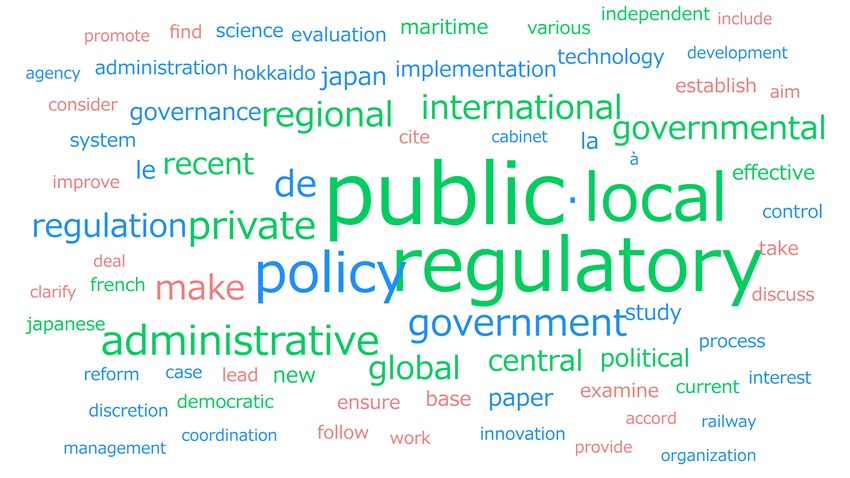
« User Local » Text Mining (updated anytime)

